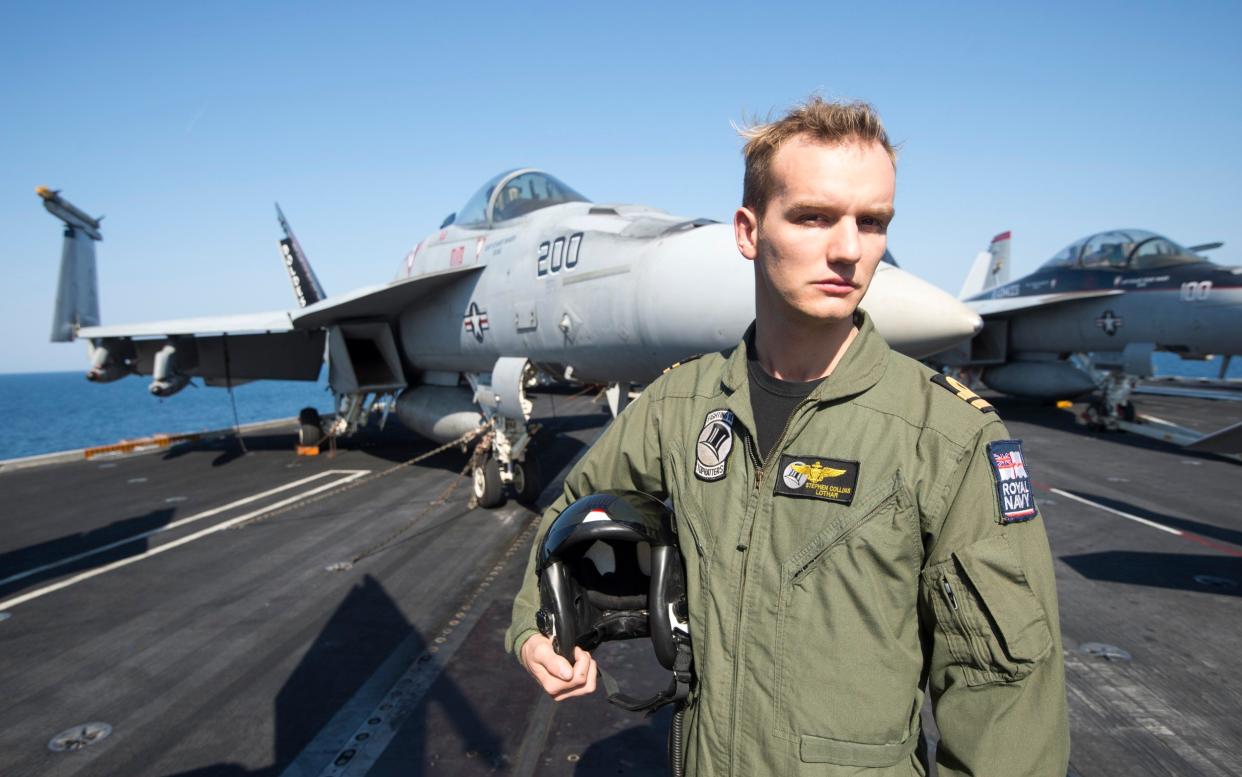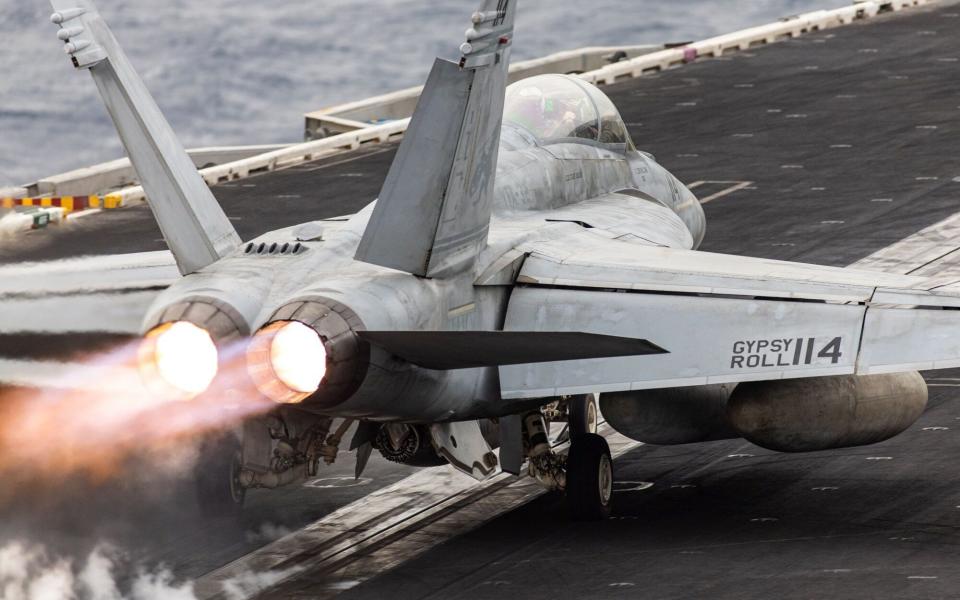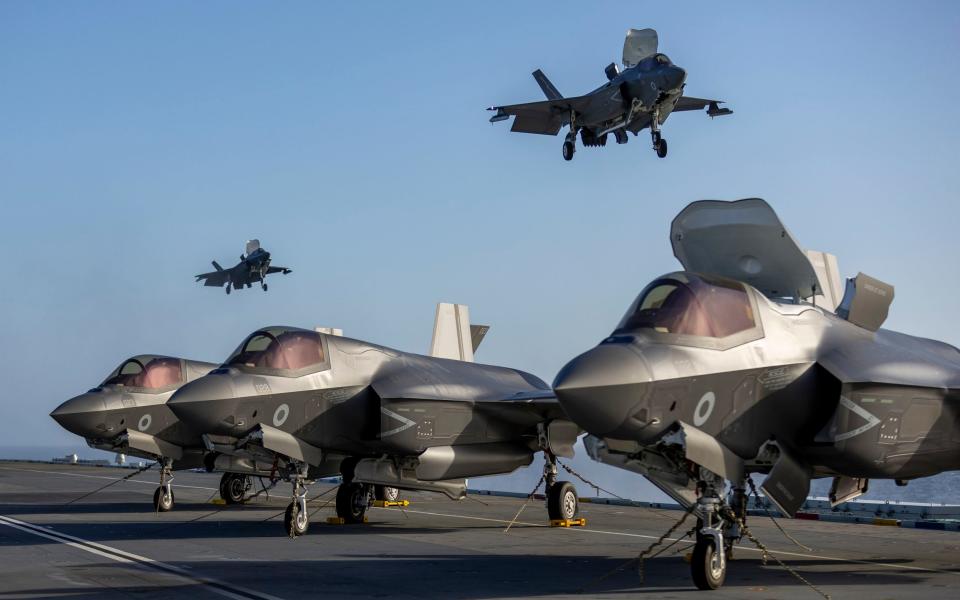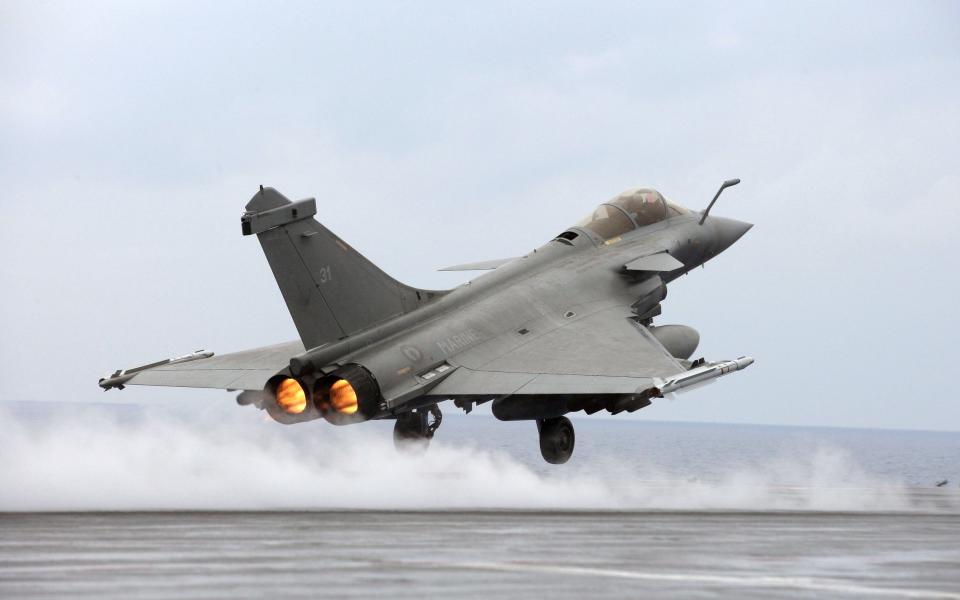The real US Navy Top Gun fighter school is nothing like the movies

- Oops!Something went wrong.Please try again later.
There was a gap of nearly four decades between the two Top Gun blockbuster films – but it appears that cinemagoers may have a shorter wait before their next fix of US Navy fast jet shenanigans.
Following the roaring success of ‘Top Gun: Maverick’ in 2022, the script for a potential third instalment is already said to be in production.
Any link between the Paramount Pictures films and the Royal Navy Fleet Air Arm appears, at first blush, to be tenuous.
But it’s closer than you might imagine.

Tom Cruise, Miles Teller, Glenn Powell and fellow cast members portray the Strike Fighter Tactics Instructor programme as competitive, populated by hefty egos and, well, mavericks.
In the first movie, pilots under instruction at Top Gun have time to go drinking in the evenings, have a stab at karaoke and oil up for a rowdy game of beach volleyball.
While military personnel often watch war films cradling their heads in their hands in despair at the inaccuracies, Top Gun is at least related to what takes place in reality, even if some of the flying scenarios swiftly rocket into the realms of pure fantasy.
Naturally the real students are far more serious and professional, as you might expect when you’re flying a F-18 Super Hornet or F-35C fifth generation stealth fighter, which you borrow from your squadron and fly to Naval Air Station Fallon. Back when the original movie was filmed, the Fighter Weapons School was based at the then Naval Air Station Miramar, close to the beaches of San Diego. In 1996, however, it moved 200 miles from the sea to the Nevada desert, where NAS Fallon sits amid huge aerial tactics ranges.
Top Gun is the very pinnacle of leading-edge naval aviation tactical training.
When its band of chosen students aren’t flying, attending debriefs or lectures, they’re probably going for a stress-relieving run or catching up on some well-deserved rest.

Those who attend are competitive but there is an emphasis on teamwork, and the pilots are given the ultimate education in their art on the understanding that all they’ve garnered is passed on to others. A Top Gun graduate is not merely a better strike fighter pilot, but an expert instructor in tactics and weapons, with a mission to make their fellow pilots better.
Top Gun was hatched during the Vietnam War, when US Navy crews flying the F-4 Phantom found themselves flailing as they fought an adversary flying small, agile MiG-17 and MiG-21s. The first course took place in 1969.
I once visited the carrier USS George H W Bush in the Western Approaches to the English Channel and watched as F-18 after F-18 was catapulted into grey, summer skies. It was a steely, sobering show of pure military might, and brought home just how much power is at the disposal of a carrier strike group. But that power, to be effective, must be directed with great skill.
The Top Gun course lasts for 13 weeks, with the highly classified training constantly evolving to maintain up-to-the-minute relevance.
Alongside academic lectures, there is a flight training plan which begins with one-on-one dogfighting, before evolving into more complex missions involving four jets. Air-to-air and air-to-ground attacks are simulated, as pilots fight their way to targets, then extract themselves. After each sortie there’s a lengthy debrief, during which the hour’s flying is unpicked in minute detail and lessons learned.
Instructors playing the enemy, known as ‘red air’, fly F-5, F-16 and F-18 Legacy aircraft, as well as the F-35C.
Those who pass will usually go on to instruct at the two Strike Fighter Weapons Schools on the west and east coasts or at a Fleet replenishment squadron. Others stay on to teach at Top Gun itself.
They will then join an operational squadron as the unit’s weapons and tactics expert, infusing its pilots with all they’ve learnt at Fallon.
Top Gun was the highest grossing film of 1986, making $357m. Top Gun: Maverick was the second highest grossing of 2022, with £1.5bn worldwide. It was the most financially successful film Tom Cruise has ever starred in.
Paramount paid £11,000 per hour to the US Navy to use F-18E (single seat) and F-18F (dual seat) piloted jets for filming. The service happily assisted, knowing that the end products are the ultimate recruiting tool.
Which brings us to the British naval fast jet story.
The Royal Navy’s Sea Harrier was withdrawn in 2006. It was the only Harrier variant with a targeting radar – thus the only one which could be used as a fully capable air-to-air fighter. Thereafter only GR7/9 ground attack Harriers were available, with very limited air-to-air capability.
Royal Navy fast jet capability suffered another severe blow when Prime Minister David Cameron controversially decided to axe all remaining Harriers as part of the 2010 Strategic Defence and Security Review. Fleet Air Arm Harrier pilots were made redundant and all Royal Navy fast jet training halted that morning.
It is said that Cameron regretted his decision to cull carrier strike mere months later. This would not be surprising as by that point Britain was involved in air strike operations over Libya. When Britain wanted to make a strike, RAF jets had to fly in all the way across the sea from Italy or Cyprus – or indeed, in not a few cases, all the way from the UK.
Meanwhile French jets were catapulting off their carrier close by the Libyan coast and arriving over the battlefield in a matter of minutes, spending almost all their expensive flight time doing useful work rather than mostly trundling along above the sea (or France) as Britain’s were. Italian and US Harrier carriers were also in action off the coast.

But Britain did have a plan for new carriers, and they did eventually arrive. The United States Navy agreed to blend British sailors into its own training programme as preparation for this.
The first of our aviators to arrive there was then-Lieutenant Stephen Collins RN. After coming top of his class in his initial training, Collins was sent to fighter attack squadron VFA-14 “Tophatters” at NAS Lemoore, California, then on to learn aggressive dog-fighting tactics.
A seven-month deployment in Nimitz-class supercarrier USS John C Stennis followed, flying close air support sorties over Afghanistan as part of Operation Enduring Freedom. Piloting an F-18 Super Hornet, Collins took part in air strikes in support of troops fighting on the ground. His callsign, awarded by his fellow aviators, was ‘Lothar’ – which stands for Loser Of The American Revolution.
Lothar did so well that he not only was picked to go to Top Gun, he came top of his course there too. Only a small percentage of US Navy pilots graduate the course and wear the Top Gun patch. Coming top, to use a phrase familiar from the films, makes Collins the best of the best indeed. Now a Commander, he is a major asset for the Royal Navy’s Fleet Air Arm.
Over 40 British pilots have now completed flying training in F-18s with the Americans, at about half the cost of conducting it here. Others have done well too, and Top Gun last year suggested that a second Fleet Air Arm pilot would be a suitable candidate for its world-famous course. The Royal Navy confirms that pilot will be attending.
British carrier strike has had its issues, including flood, fire and having to spend millions fixing ships’ propellers.
Yet the Fleet Air Arm, training alongside our friends and allies in the US, has shown that British naval pilots are among the best of the best – and consistently out-perform their RAF and Army colleagues.
So far, so good.
But there’s only so much cosying up that can happen between the military and Hollywood.
Despite its close involvement in the development of both films, there is one boundary that can never be crossed at Top Gun.
Anyone quoting from the movies is immediately awarded an on-the-spot $5 fine.
